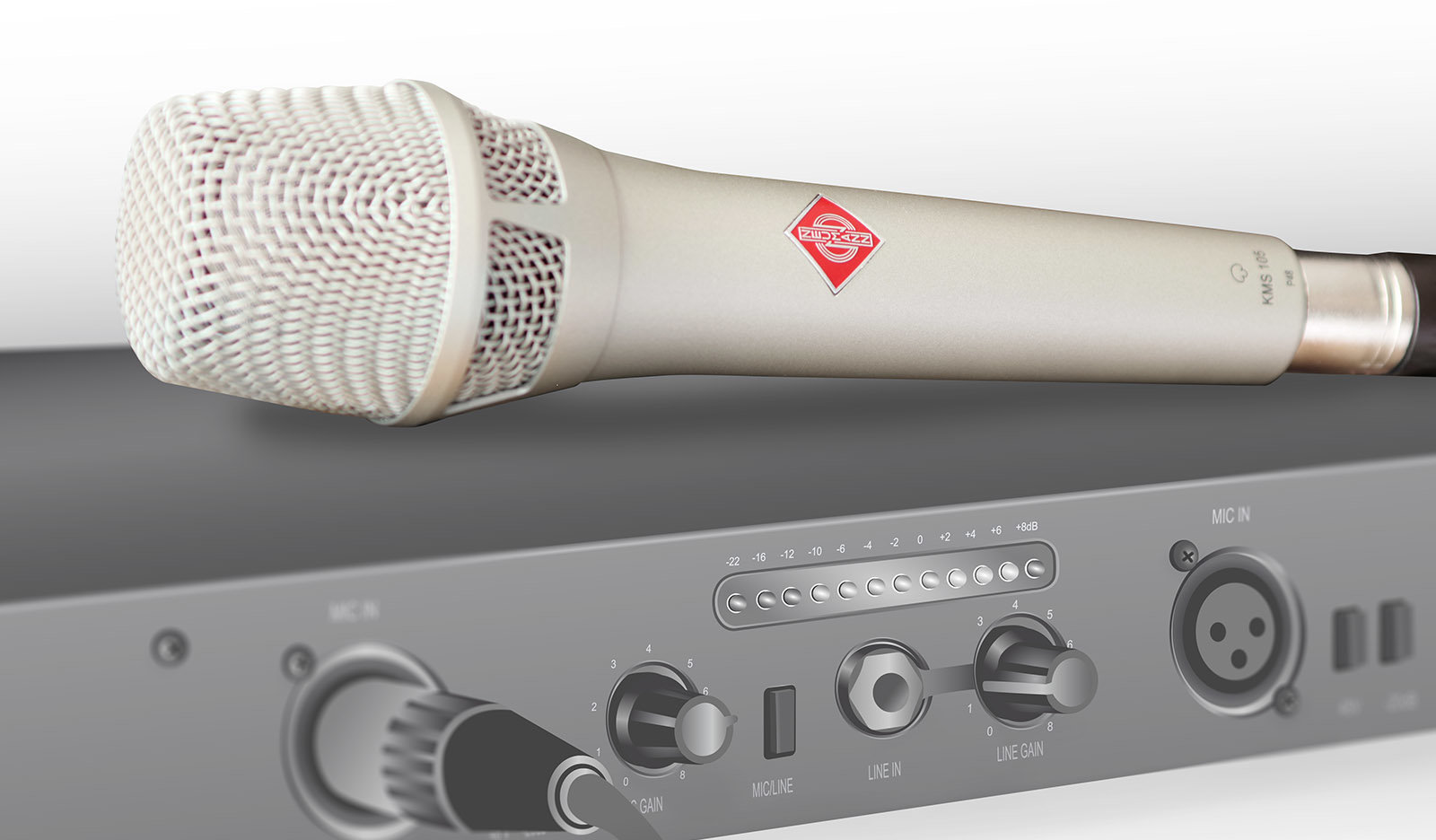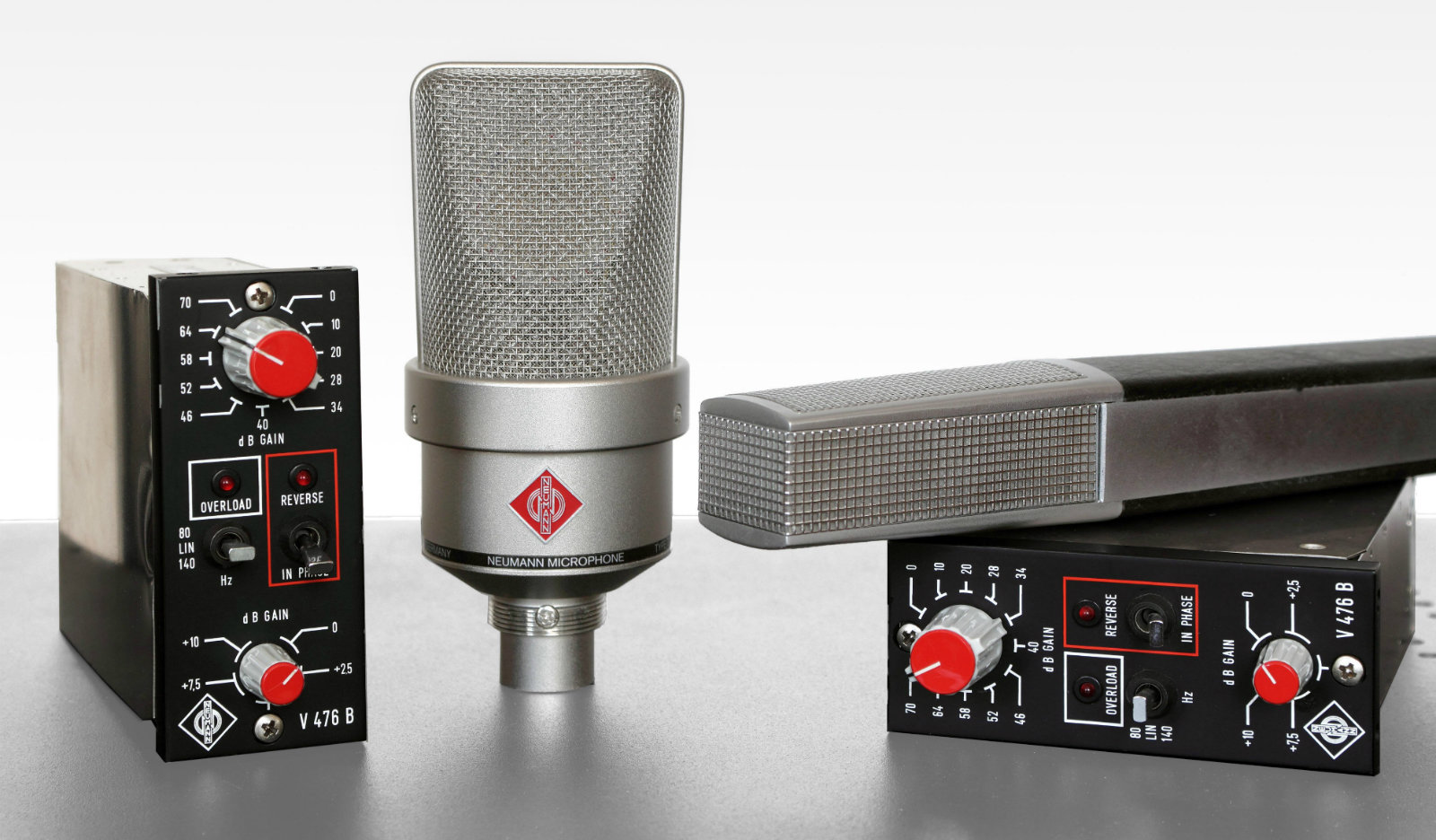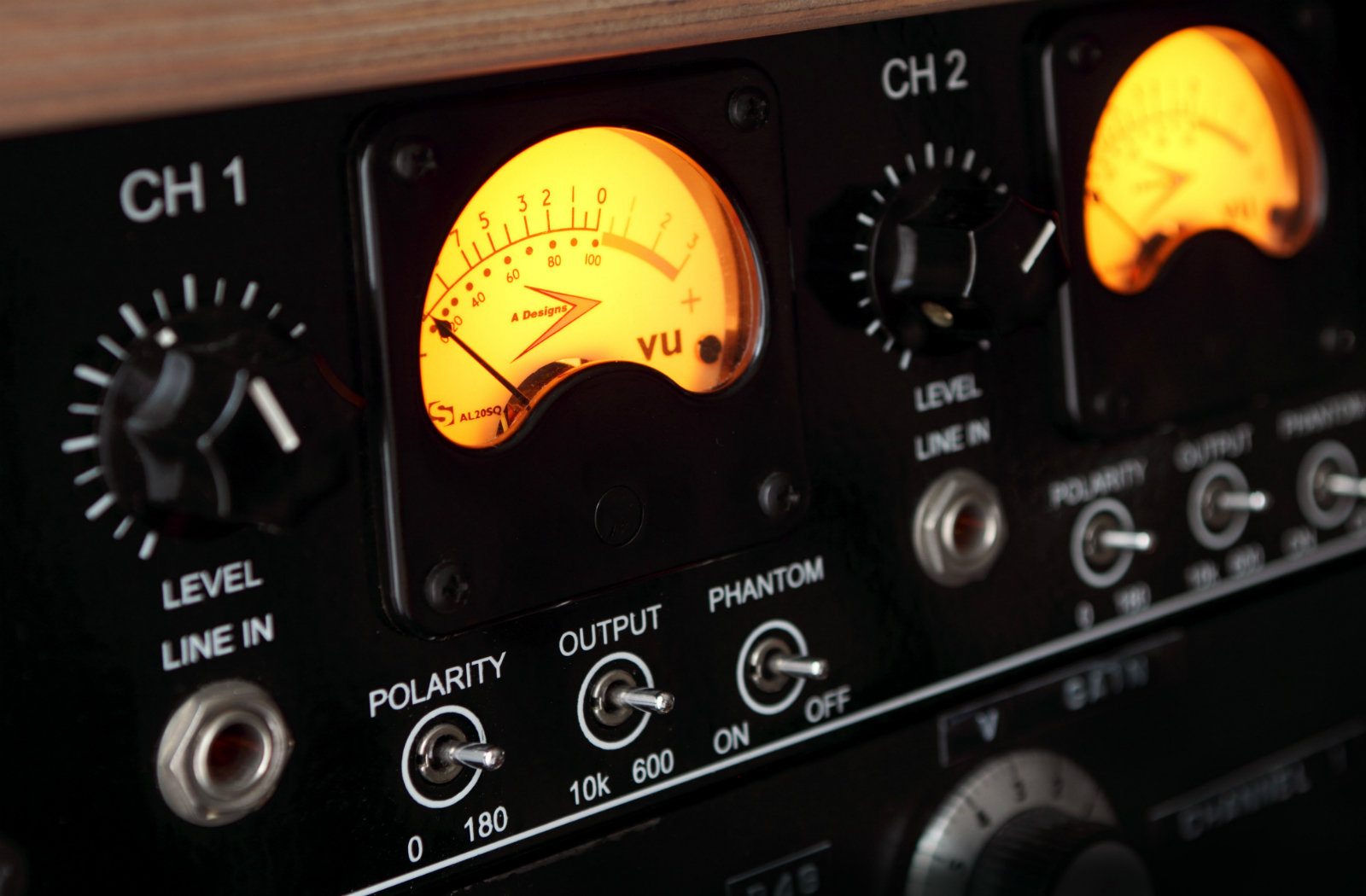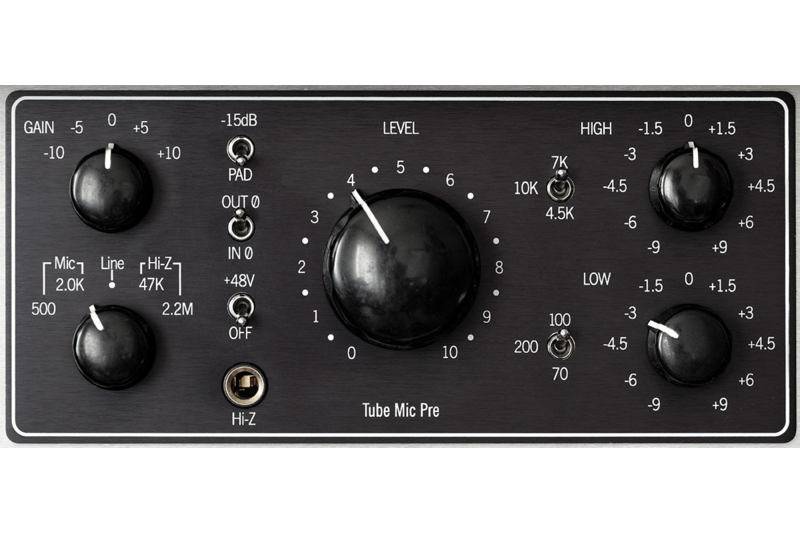WHAT ARE THE BASIC FEATURES AND FUNCTIONS OF A PREAMP?
Whether you work with the built-in preamps of your audio interface or an external preamp, the basic features are the same.
INPUTS
The minimum requirement is one microphone input; for stereo recordings you obviously need at least two. Microphone inputs come with an XLR connector, TRS connectors are not acceptable for mic inputs.
Audio interfaces and some (but not all) external preamps also feature line inputs. These can either be balanced or unbalanced. Balanced connections have greater immunity to electromagnetic interference. Line inputs use either TRS connectors or XLR connectors, the latter are often found on high end gear.
Most audio interfaces and external preamps also feature one or more instrument inputs to plug in a guitar or bass. Or an original Rhodes E-Piano, which operates with a similar kind of magnetic pickup. Instrument inputs come as TRS connectors (usually unbalanced). So they may look like line inputs, but there is a fundamental difference: For optimal results, instrument inputs must have a high input impedance of at least 400 kOhms. A usual value is 1 MegaOhms (1000 kOhms), which is the input impedance of most guitar amplifiers. That’s what guitar and bass pickups are designed for. Line inputs, by comparison, are much lower impedance, often around 10 kOhms. If you plug a guitar or bass into a line input, it loses all brightness and sounds dull.
GAIN CONTROL
This is the most important function of all. As was explained in the previous tutorial “Why Do I Need a Preamp?”, the purpose of a preamp is to bring signals to full operating level. Most mic preamps offer up to 60 dB gain, which is enough for most purposes. Ribbon and other low output dynamic microphones may require even more gain, which is why some preamps offer up to 80 dB. Condenser microphones typically produce much higher output level and work fine with just about any preamp.
The quality of a microphone preamp becomes most evident at high gain settings. Above about 50 dB gain, cheap preamps sound increasingly flat and lifeless, while a top-notch preamp retains its superior sound quality even in its highest settings. Cheap preamps also tend to be noisier than more expensive products. This may not be noticeable in low gain settings but may become an issue when you’re working with low output mics that require lots of gain. For optimal sound from dynamic microphones, especially ribbons, you should invest in a high quality microphone preamp. Of course, condenser mics also benefit from a more expensive preamp, but you can get good results even with an inexpensive unit or the mic pres built into your audio interface.
PHANTOM POWER (P48)
Condenser microphones contain internal electronics that require an external power source. Dynamic microphones do not require external power. The solution to this dilemma is phantom power, a Neumann invention. It allows condenser mics to be powered from the mic input without an additional cable while leaving dynamic microphones unaffected. That’s why it is called phantom power: It is “invisible” for dynamic microphones, because there is no voltage differential between both signal leads.
PHASE REVERSE (POLARITY)
This function reverses the signal polarity. Think of it as swapping the two signal leads of a balanced connection. A phase reverse button is often useful, when recording an instrument with more than one microphone. If, for instance, you record a snare drum with two mics, one on top, one from the bottom, you have to reverse the polarity on one of the two (usually the bottom one) so both signals are “in phase.” For if you left them out of phase, the two microphone signals would cancel each other out partially, resulting in a very thin sound.
LOW CUT (HIGH PASS)
Many preamps come with a low cut switch. Another name for the same function is high pass, because such filters attenuate the bass frequencies and let the higher frequencies pass. Cutting low frequencies is a way to get rid of rumble and other unwanted noises below any musical content. A low cut (at a higher frequency) can also be used for creative purposes, i.e. to shape the sound and cut excessive bass, for instance if a vocal or a guitar sounds too boomy.

Preamps (1)
Why Do I Need a Preamp?

Preamps (4)
Will a Better Preamp Give You Lower Noise?

Preamps (5)
Will a Better Preamp Improve Your Sound?

